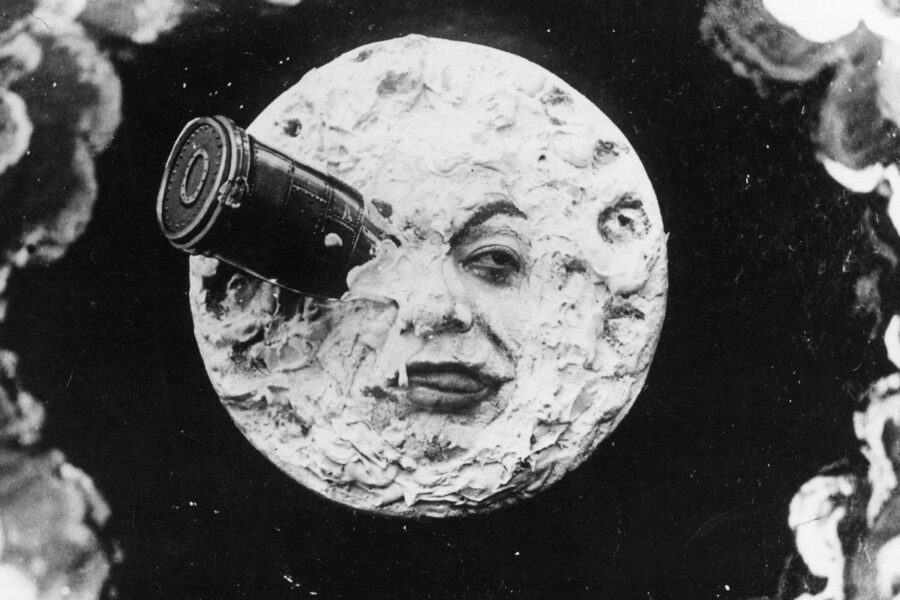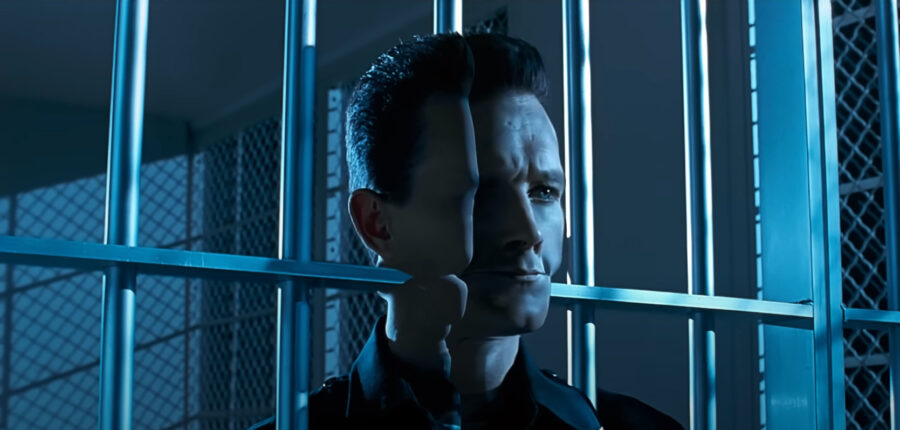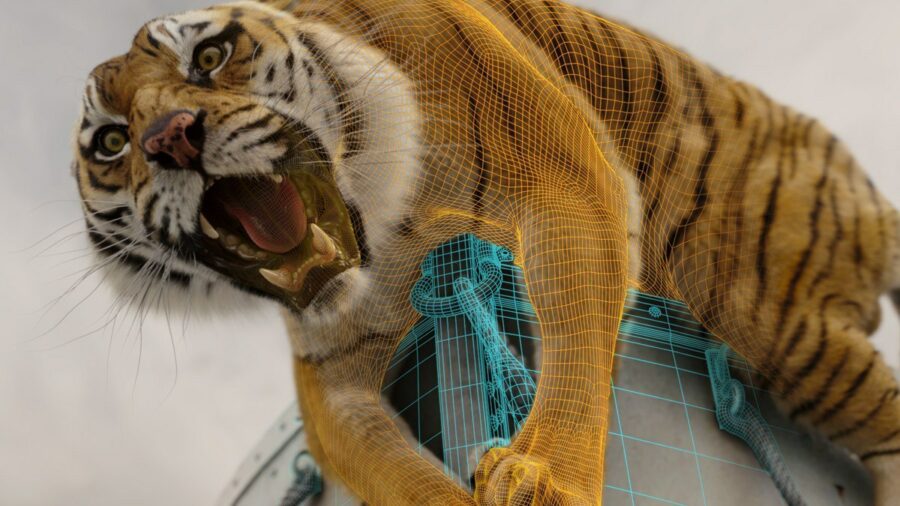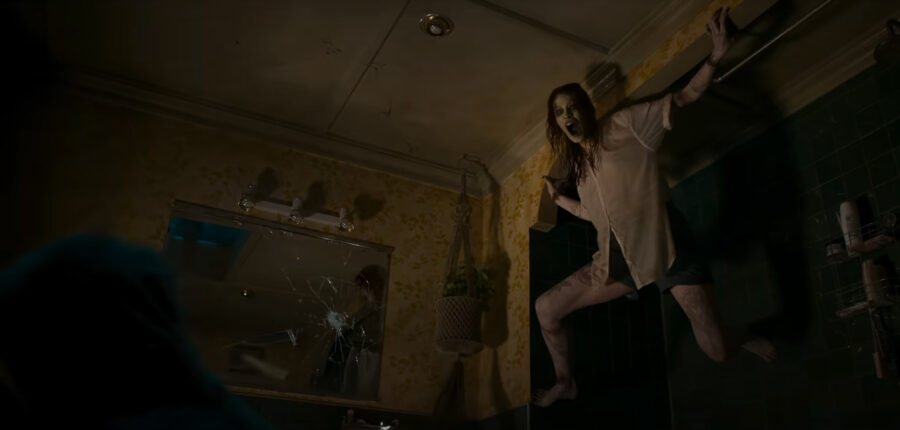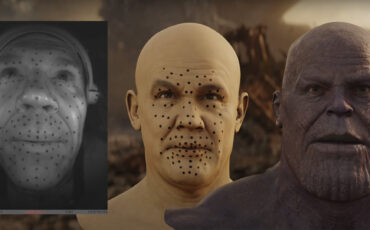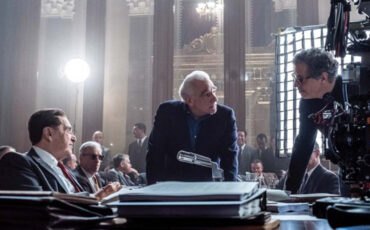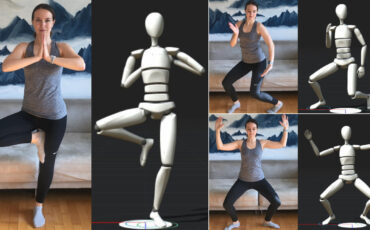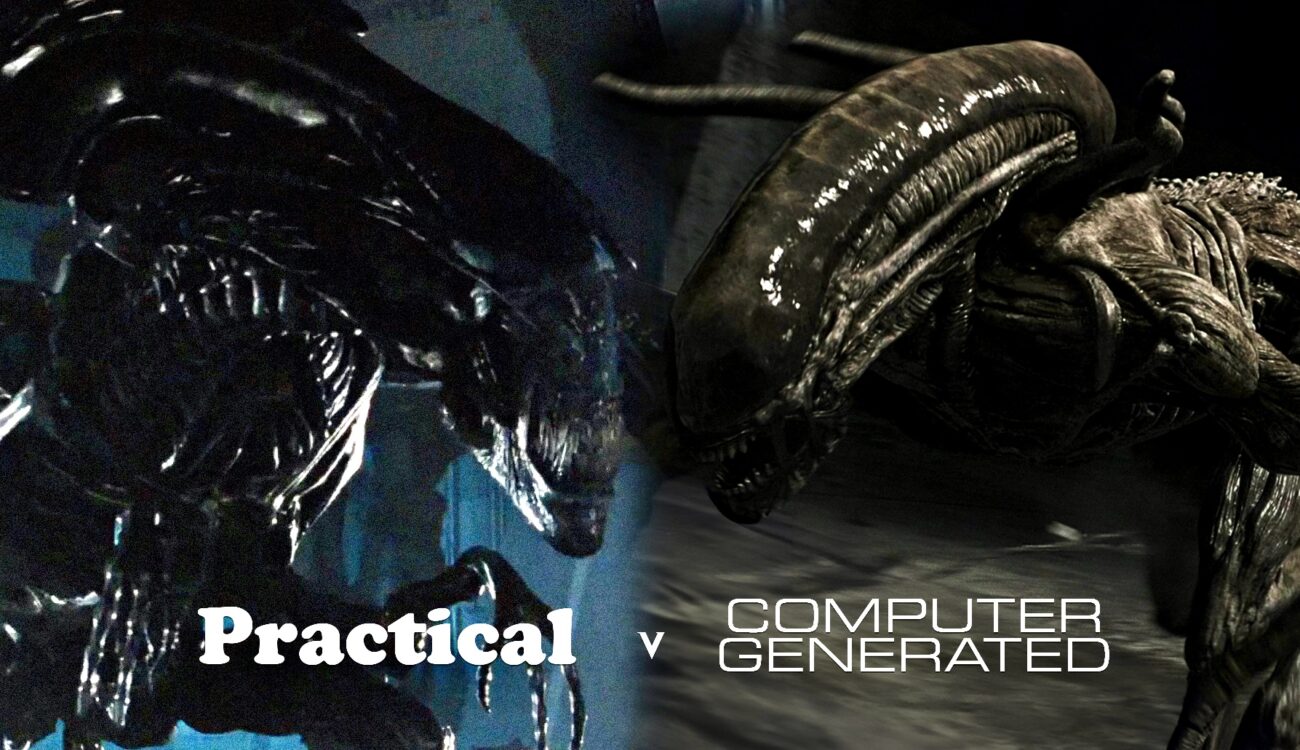
Since the birth of cinema, filmmakers have found various ways of telling their stories. They’ve needed to “cheat”, in a sense – to make the impossible possible. Visual effects were created to fill a gap in the filmmaking toolbox. Since there are only two ways to accomplish VFX, there are those on either side of the debate: Practical v. CGI. Let’s dive into that debate and see what we find!
The birth of VFX
There are so many great resources on the web where you can find the history of VFX, so I won’t bother paraphrasing what’s been said better. But it is worth mentioning that the first visual effect in a film was the edit. A simple cut from one shot to the next. As simple as it was, it was revolutionary. And it didn’t stop there.
As films evolved, visionaries such as Georges Méliès, Eugen Schüfftan, and Ray Harryhausen advanced the world of VFX, whether by simple camera trickery or inventing new techniques (such as stop-motion). The next paradigm shift came in the 1990s when artists used computer-generated effects to create things that never existed. Things that could never exist. After that, we had several years of really bad CGI in films before redefining our standards. I know several people who cringe when they see heavy use of CGI in any film. But, those same people are willing to forgive non-perfect practical effects because they see the effort and value in them. Whereas CGI is CGI, no matter how much time was put into it.
The good
My standard of whether a VFX shot is “good” or not would be whether it holds up under today’s scrutiny. A film like “Terminator 2: Judgement Day” (1991) is timeless. It’s just as impressive today as it was 32 years ago. T2 was a pioneer in CGI, having one of the first fully digital characters in any film: the T-1000 (played by Robert Patrick). But as much as it pushed the boundaries, James Cameron also relied heavily on practical effects. Stan Winston and his crew provided all of the practical effects for the film. CGI was still in its infancy. Cameron knew that the best way to use VFX was to marry the best of both worlds – a technique he still uses to this day.
Producing from the Front
John Carpenter’s “The Thing” (1982) has the most widely accepted, best practical visual effects in a movie, created by Rob Bottin. If you’ve not seen the movie, it’s worth viewing for its VFX alone, but be warned: it’s pretty disturbing. John Landis’ “An American Werewolf in London” (1981) has the coolest werewolf transformation in any film, utilizing so many different practical techniques from Makeup Designer Rick Baker that it’s kind of mind-blowing. “Alien” (1979) and “Aliens” (1986) both won Best VFX Oscars for their use of practical effects. In fact, it’s worth noting that every James Cameron film since T2, except for “True Lies” (which was up against “Forrest Gump”), has won the Oscar for Best VFX.
I’m finding it difficult to cite Star Wars as an example of practical effects since the ‘Special Edition’ replaced almost all of the practical work done by ILM in 1977. But at the time, John Dykstra revolutionized motion control technology, which was a huge leap forward for VFX. Star Wars was the pinnacle of practical VFX work at the time. There are many great documentaries about Star Wars and the founding of ILM. I urge you to watch them if you’re at all interested in VFX.
The bad
When effects fail, whether they are practical or digital, a solution must be presented. The most fitting instance of what I’m talking about is a sleeper 1975 film called “Jaws”. You may have heard of it. And it could have been a very different kind of film.
Script in hand, Steven Spielberg (then 26 years old) had a vision of what his film would look like. But after a few days of filming with a practical shark, it got waterlogged and stopped working. They had to scrap the majority of scenes featuring the 25-foot mechanical shark that cost half a million dollars to build. Movie ruined? No. Spielberg and his team decided to intentionally not show the shark as a way to build suspense in the film. The visuals of the shark were replaced by John Williams’ brilliant theme, which only played when the shark was near. So you knew that there was a shark in the water, even without seeing one. Those two notes, over and over again. So simple, but effective. So this “misfortune” actually made the film better! Working under restrictions often does that to filmmakers.
Let’s consider a similar, but modern hypothetical scenario. While in production (filming), there is a VFX Supervisor on set who says they need X, Y, and Z to be able to make a CG version of the shark in post-production. Those circumstances are met, and in post-production, the VFX artist puts in a CG shark. Done. But the VFX company doesn’t have adequate time to work on it, so it doesn’t look as realistic as it could. The studio pushes for the completion of the shot, so the VFX company sends it along. We’ve accomplished the VFX shot but to the detriment of the quality of the film. Rather than pivoting around the problem, we’ve barreled through and ignored it altogether (the “fix-it-in-post” mentality). So now you have another movie with “bad” CG, rather than a great film. And this is how most films are made today.
Visual effects were a way for a filmmaker (and the special effects team) to figure out how to make their vision a reality. The artistic innovation of the VFX crew was combined with problem-solving skills. Now it’s just part of the filmmaking pipeline. More often than not, a crutch. There is no “figuring anything out”, at least on the part of the filmmaker. If a Director says “I want a CG tiger there”, the VFX artist puts in a CG tiger in post-production. It is the job of the VFX artist/supervisor/studio to figure out how to do it, while the Director moves on. The burden is put on the VFX studio to do the job, those who are getting paid the least amount possible to do so – and may end up going out of business. And that, in my opinion, is not good filmmaking.
The ugly
The horror genre seems to consistently rely on practical FX, and I wanted to explore why that is. It’s not because CGI can’t reproduce photorealistic images because we saw that as far back as Gollum in “The Lord of the Rings: The Two Towers” in 2002 from Wētā FX. So why does a movie like this year’s “Evil Dead Rise” use mostly practical FX if CGI is cheaper/easier/safer?
The horror genre lends itself, perhaps more than other genres, to its believability. And this distills to a much finer point – the performances you get from your actors while on set. You need them to interact with something real, and tangible. Having a physical manifestation of your monster/villain is always much more believable than not. I love the (entirely CG) creatures from “A Quiet Place”, but it would be hard for me to pick them out of a lineup of other CG alien creatures. Whereas I know exactly what Ghostface from “Scream” looks like, or Michael Myers, Jason, Freddy, etc.. I have a distinct visual connection with the Xenomorph from “Alien” because it was real. It was really there while they were filming and I know that, whether consciously or not.
The last point that I want to make is that filmmakers seem to have a certain pride in working with practical effects. They boast about not having CGI in their film. After the wave of films that use heavy computer-generated VFX, it’s almost niche to be able to say that you’ve used none. Since it’s so prevalent and expected in the workflow, to go against the grain is almost “cool”. Or at the very least, noteworthy.
Conclusion
Are Practical VFX better than Computer-Generated VFX? Well, for some things- yeah, they are. To get good performances out of your actors, they absolutely are. But it’s not really a binary question. There’s no right or wrong answer. My friends who hate CGI just hate CGI which is noticeable. They don’t see a background replacement in a David Fincher film and lean over to me and go “Ugh, the CGI- am-i-right?” What it boils down to is: how much you respect your craft. Filmmakers who know how the VFX pipeline actually works– Gareth Edwards, Neill Blomkamp, James Cameron, J.J. Abrams, Bong Joon-ho, David Fincher, Jordan Peele– their films look better than those who don’t because they know the limitations and benefits of using CGI before they shoot. They know the right and wrong way to use it and make it work for them.
It’s really a combination of both that works the best. The “purists” who claim that only practical FX is the way to go are limiting themselves. And they probably don’t understand how to best use digital FX properly – because when they’re both used properly, the audience doesn’t even notice. Or better yet, reacts – “How did they do that?” And that is the best reaction you could hope for.
So what do you think? There are so many great examples of practical effects in films, please excuse me if I left out your favorite. I’d like to know what they are, though! And where do you fall on the Practical v. CGI debate in VFX?
